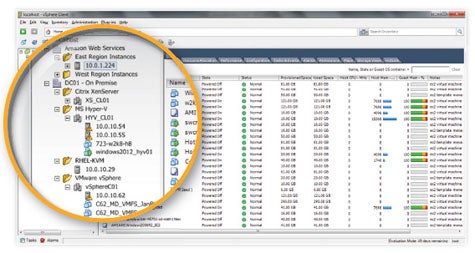As companies increasingly turn to the public cloud to house various components of their IT infrastructures, it will probably always be the case that other components will remain on-premise. So the question of how to best manage that hybrid environment becomes one that an increasing number of IT pros will have to be able to answer.
I discussed that question in a recent email interview with Lynn LeBlanc, co-founder and CEO of HotLink, a hybrid IT management software provider in Santa Clara. I started by asking LeBlanc what she finds companies tend to keep on-premise, and why they’re going that route. She said the reasons for hybrid cloud deployments vary from organization to organization, but it’s generally more a question of what they want to put in the cloud:
We see hybrid environments emerge when companies have specific use cases that are better suited for outside of the data center. For example, it’s often more cost-effective to push disaster recovery and business continuity to public clouds and pay only for what you need than it is to build out a second data center or adopt a co-location site. Unpredictable economics also drive data center directors toward public clouds for certain applications. It is practically impossible for IT leaders to know exactly what the company will need a year from now, but they are forced to set budgets anyway. This makes the elasticity and pay-as-you-go model of the cloud ideal. Universally, our experience is that once an IT organization starts working in public clouds, more applications will inevitably follow.
I asked LeBlanc if there is certain data that should not be stored in public clouds. She said any kind of data can be stored in public clouds:
What needs to change are the hurdles data center leaders face in adopting hybrid environments and managing them alongside their on-premise environments. And that comes down to simplicity and management, because the creation of additional silos and the ensuing management headache will stall the adoption of public cloud services. Managing off-premise resources needs to be as seamless as managing on-premise resources. A solution such as HotLink Hybrid Express provides a single point of administration, management, automation, networking, integration, analytics and more for hybrid enterprises. VMware vCenter becomes a hybrid management hub spanning VMware vSphere, Amazon Web Services (AWS), Microsoft Hyper-V, Citrix XenServer and Red Hat Enterprise Linux (KVM). IT can continue operating in the very same manner as a pure VMware environment, while having the flexibility to incorporate other platforms, including public cloud.
So will a time come when the hybrid cloud will become obsolete, because everything will be in the public cloud? LeBlanc said she doesn’t foresee such a time:
There are no absolutes in IT. Look at virtualization. It’s clearly proven its value, but we still don’t have 100 percent virtualized data centers. So, no, I don’t see a time when the hybrid cloud will be obsolete. Whether for latency, security or a lack of will to migrate, we’ll always see some applications and data on-premise. That’s the beauty of IT. There are choices for everyone.
HotLink maintains that its approach to eliminating hybrid IT complexity is unique, so I asked LeBlanc what makes it so. Her response:
Game-changing solutions often enable dramatic improvements in a very simple way. HotLink Hybrid Express does just that by removing silos and providing a single pane of glass through which to manage the hybrid environments through VMware vCenter, a platform that users already operate and understand. HotLink Hybrid Express extends VMware vCenter’s robust management functionality to other platforms in the hybrid ecosystem, whether on- or off-premise, making hybrid production and scale-out deployments a reality for the enterprise.
A contributing writer on IT management and career topics with IT Business Edge since 2009, Don Tennant began his technology journalism career in 1990 in Hong Kong, where he served as editor of the Hong Kong edition of Computerworld. After returning to the U.S. in 2000, he became Editor in Chief of the U.S. edition of Computerworld, and later assumed the editorial directorship of Computerworld and InfoWorld. Don was presented with the 2007 Timothy White Award for Editorial Integrity by American Business Media, and he is a recipient of the Jesse H. Neal National Business Journalism Award for editorial excellence in news coverage. Follow him on Twitter @dontennant.




